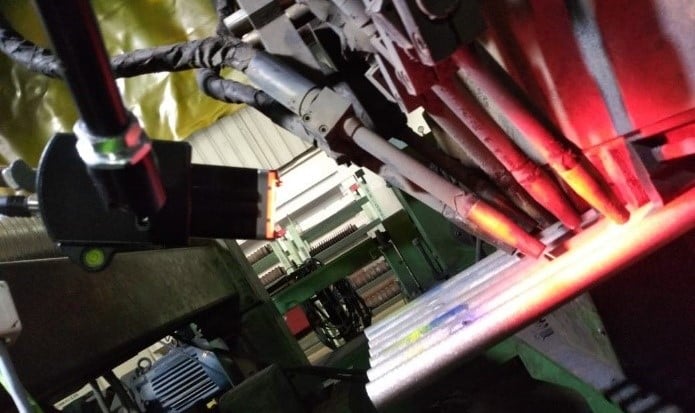We are excited to introduce Xiris’ very own collection of stories from the field which showcase short articles written by our product specialists, engineers, and welding experts which discusses their own experiences, demonstrations, and welding tips and tricks! This story focuses on monitoring welds on wall panel membranes.
Wall Panel Membranes are structures that form the basis of heat exchangers used in a variety of boilers to transfer heat in industrial processes such as petrochemical processes. The membrane consists of a series of tubes that are welded to strips of metal placed between the tubes. This process requires long welding passes to fully join each of the tubes and it adjacent metal strip. The tubes and metal strips are fed by a long conveyor so that the welding process is done as the material moves under/over the weld heads. The welding is often done with multiple welding torches to speed up the process. Typically, 4-8 Metal Inert Gas (MIG) welding torches are ganged together to weld multiple seams in one pass. Filler material is used to complete the weld, added by a wire feeder in the welding torch when the trigger is held.

Fig. 1:Example of an XVC-1000e weld camera monitoring the MIG process of welding one seam
It is important to monitor the progress of the MIG welding torches as the membrane moves through the welding station because the tube-to-metal-strip interface can move, potentially causing problems with the welding process. Installing an operator to monitor the welding processes at the weld point is very difficult as the operator must monitor the welding in hazardous conditions: the available space is very confined and breathing is difficult with the presence of fumes and smoke. To solve these issues, weld cameras such as Xiris’ XVC-1000 Weld Camera can be mounted immediately downstream of the weld torches to see the leading edge of the weld process on both the top AND bottom of the panel membrane. This provides the operators a clear view of the weld torches and melt pool where any issues of the weld process of each membrane/tube weld pass can be seen. Once a weld process problem is detected, the operator can perform the corrective action needed from the comfort and safety of a monitoring station up to 100 m away from the weld process.
The benefit to the fabricator of using weld cameras is enormous: far better health and safety working conditions for the welder to monitor the welding process; a clearer view of the welding detail and provide better warning if a welding process is going out of control; and continuous monitoring will reduce machine stoppages and improve productivity.
If you have questions or would like to learn more about any Xiris products, please contact us.




.png)

